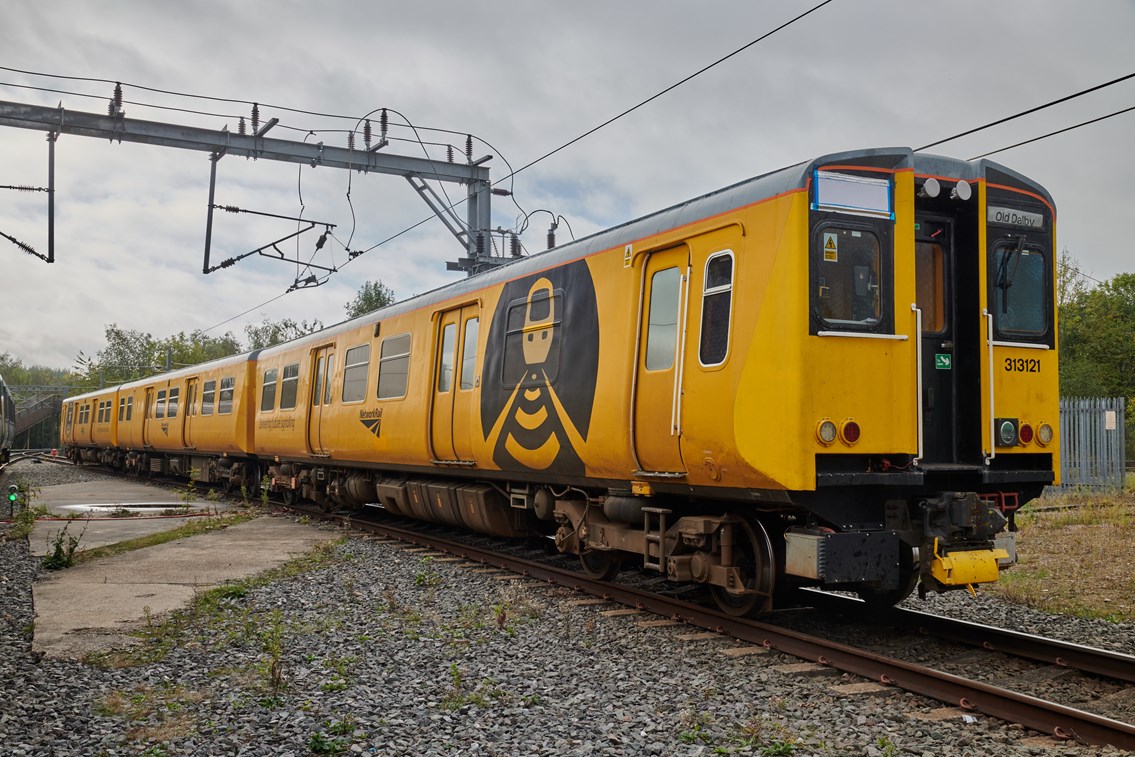Thursday 16 Dec 2021
Network Rail’s train testing site achieves major milestone as part of digital railway programme
- Region & Route:
- Eastern
- | Eastern: East Coast
Network Rail’s purpose-built Rail Innovation and Development Centre (RIDC) reached a major milestone on the East Coast Digital Programme last month with the successful completion of dynamic testing of the Alstom-installed European Train Control System (ETCS) on rolling stock. The test was controlled from the ETCS National Integration Facility (ENIF).
The RIDC test site at Melton is owned and operated by Network Rail and is purpose-built to dynamically test rolling stock, on-track plant and machines, infrastructure, and equipment.
The facility is designed to support high and low speed testing of vehicles and infrastructure. It has two separate test tracks, including a high-speed test facility between Melton junction and Edwalton. The system can be configured to support 125mph and 90mph testing and is capable of supporting testing of ETCS System Requirements Specification onboard software versions 3.4.0. and 3.6.0. (or Baseline 3 Maintenance Release 1 and Baseline 3 Maintenance Release 2).
ETCS is the core signalling and train control component of the European Rail Traffic Management System (ERTMS). It is a key element of the East Coast Digital Programme between King’s Cross and Stoke Tunnel, south of Grantham. This stretch of railway will be the first to migrate to ETCS operations to create a more capable, reliable and flexible East Coast Main Line that works better for passengers and users. ETCS continuously calculates a safe maximum speed for each train with cab signalling providing continuous communication and speed supervision, with physical lineside signals being replaced by in-cab signalling.
Working with Network Rail, Alstom successfully tested 3.4.0 software, which provides a technologically advanced ETCS baseline system. The system is also interoperable, enabling testing of products by different on-board ETCS manufacturers.
Toufic Machnouk, Network Rail’s Director, Industry Partnership Digital, said: “This test track is the most advanced ETCS dynamic test facility in the UK and is a key building block for deployment of ETCS rolling stock on to the network. Successful completion of this dynamic testing exercise is a major step in getting the site ready for the industry to commence the First in Class testing of ETCS on board systems.
“This is the first site of its kind in the UK and achieving this milestone is testament to the dedication and tenacity of the project team. The focus now turns to getting the system entered into service and ready to receive trains in early 2022.”
Jason Baldock, Managing Director, Alstom, Digital and Integrated Solutions, added: “Dynamic testing at the RIDC test facility proves the UK rail industry is up to the challenge of providing the skills, capacity and capability to deliver the digital railway. It has been a complex challenge, but we have learned invaluable lessons for future ETCS deployments."
ENDS
Notes to Editors
Dynamic testing of the ETCS test system is a key stage in validating and demonstrating the successful integration of the ETCS trackside element with ETCS onboard technology. Dynamic testing was supported by Network Rail’s Class 313 test train and Angel Trains’ Class 180 which is operated by Grand Central. Both use the retro-fitted Alstom Atlas 200 on-board ETCS technology.
Alstom’s ETCS solution allows for:
- Configuration of the test track to transition directly from Level National Train Control (NTC) to ETCS Level 2 or can be configured for ETCS L1 launch – in other words moving from Level NTC to ETCS L1 and ETCS L2.
- The test track can be configured as two distinct separate test tracks with a safety buffer zone to support low speed (90mph) testing or can be combined to support high speed (125mph) testing when configured as a single test track
- Each of the test tracks is controlled by a separate Radio Block Centre and separate Interlocking with RBC-RBC and Interlocking-Interlocking handover capability.
- This system supports both Circuit and Packet Switched communications via The Global System for Mobile Communications-Railway (GSM-R)
Contact information
Passengers / community members
Network Rail national helpline
03457 11 41 41
Latest travel advice
Please visit National Rail Enquiries
Journalists
Kathryn Muffett
Media Relations Manager
Network Rail
01904 383180
kathryn.muffett@networkrail.co.uk
About Network Rail
We own, operate and develop Britain's railway infrastructure; that's 20,000 miles of track, 30,000 bridges, tunnels and viaducts and the thousands of signals, level crossings and stations. We run 20 of the UK's largest stations while all the others, over 2,500, are run by the country's train operating companies.
Usually, there are almost five million journeys made in the UK and over 600 freight trains run on the network. People depend on Britain's railway for their daily commute, to visit friends and loved ones and to get them home safe every day. Our role is to deliver a safe and reliable railway, so we carefully manage and deliver thousands of projects every year that form part of the multi-billion pound Railway Upgrade Plan, to grow and expand the nation's railway network to respond to the tremendous growth and demand the railway has experienced - a doubling of passenger journeys over the past 20 years.
Follow us on Twitter: @networkrail
Visit our online newsroom: www.networkrailmediacentre.co.uk

